|
The Giant Barrel Sponge (Xestospongia muta) is a common sighting on Caribbean reefs, but few divers realize just how ancient these fascinating animals can be. They stand out on the reef with their deep reddish color and are found in an amazing variety of shapes and sizes. Studies have shown that they can can be centuries or even millennia old; the average-sized Giant Barrel Sponges (about the size of an oil drum) are probably already 150-200 years old! Here on Roatan we can find sponges that are well over six feet tall and sometimes over six feet across, putting them in the range of 1000 years old or more.
Calculating the age of Xestopsongia Muta:
Dr. Joseph Pawlik from the University of North Carolina Wilmington has been doing some fascinating work on Giant Barrel Sponges. I have been lucky enough to hear some of his talks on sponges and his passion for these animals is truly infectious and has made me see them in a new light. His team has come up with a way to get the approximate age of a Giant Barrel Sponge using some basic measurements:
The calculator may not work perfectly with all Xestospongia muta, as Dr. Pawlik informs me, because of the huge variety in shapes they can take on, depending on the local water conditions. And they can definitely take on some really bizarre shapes over their long lives:
For the last year I have been doing a lot of dives on my favorite site here on Roatan (and probably the world!) with the team at West End Divers to find more of these ancient sponges. "Texas" is a deep plateau at 80-120ft on the very western tip of the island and often has some very strong currents. As the dive site name suggests, everything is bigger in Texas! With different blends of nitrox we have been able to map out much of the area and have found some monster sponges before being swept off the island. It's always a treat to drift around a coral head and discover a Giant Barrel Sponge I've not seen before and try to guess it's age. Many of them on Texas have grown over the centuries to "bend" with the predominant currents.
Feeding and Reproduction:
Sponges are filter feeders, continuously absorbing nutrients from the seawater. They have countless tiny pores on their outer walls that pull water into the colony. Specialized cells with whip-like tails called flagellae keep up a constant flow and they are able to filter up to 20,000 times thier own volume of water a day. It has been estimated that up to a quarter of all the water over a reef gets filtered out by it's resident sponges. The clip below from is from "Jonathan Bird's Blue World" and while I cringe to see the diver touching these sponges and the reef, the clip does show the sponge's filtering action really well:
Recent Threats to Giant Barrel Sponges:
For all their massive size and great age, Giant Barrel Sponges are very fragile and weigh very little in the water. They are easily smashed apart by the careless dropping of an anchor and even a dragging fishing line can slice through them, cutting off decades of growth in just a matter of seconds. Careless divers can also harm Giant Barrel Sponges by kicking or bumping into the rims, where most of the new growth takes place.
It's been found that most Giant Barrel Sponges will go through a period of "cyclic bleaching" where they will lose their color, similar to the bleaching found in corals. In this case it is a resident cyanobacteria that is being expelled. One sponge might be affected while the others around it are unchanged. There is ongoing research into what exactly causes this bleaching but it appears to be happening more and more often in recent years. Fish tend to feed more aggressively on bleaching sponges in this weakened state. While some may eventually succumb and die off, most can eventually regain their color and continue growing happily.
So on your next dive, as you pass over a Giant Barrel Sponge, take a minute to imagine what the reef looked like hundreds of years ago when the sponge was just getting started. It's kind of comforting to know that if we take care of our reefs now, that same animal could outlive even our great-great-great grandkids!
Happy New Year and Happy Hunting! Mickey Charteris
3 Comments
|
AuthorMickey Charteris is an author/photographer living on Roatan. His book Caribbean Reef Life first came out in 2012 and is currrently into it's sixth printing as an expanded fourth edition. Archives
August 2019
Categories
All
|
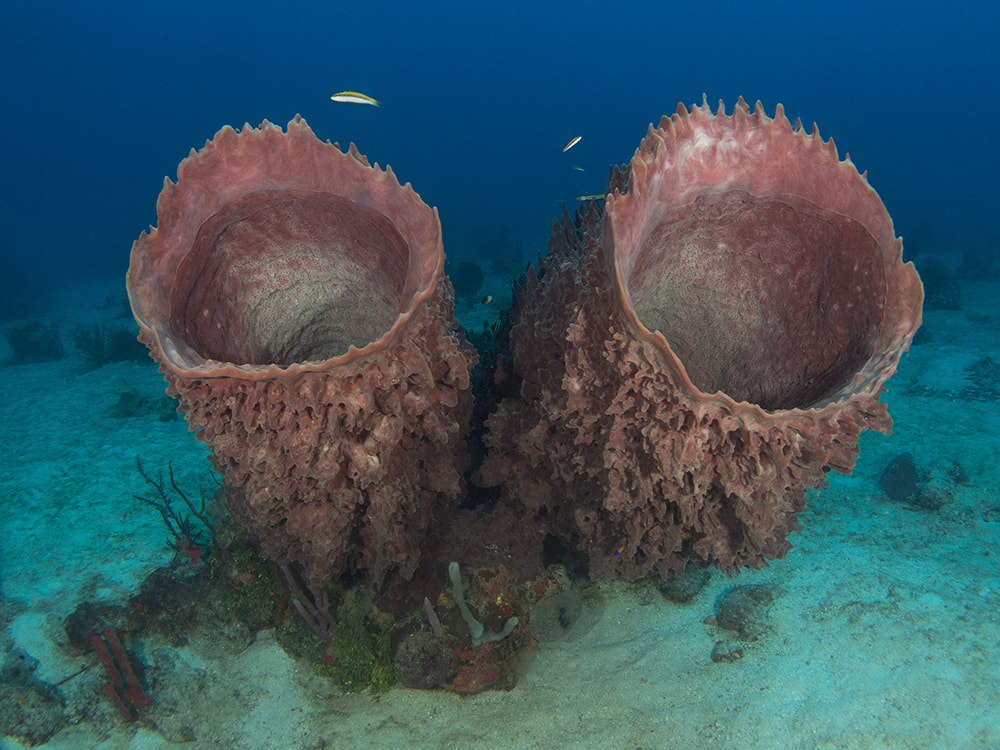
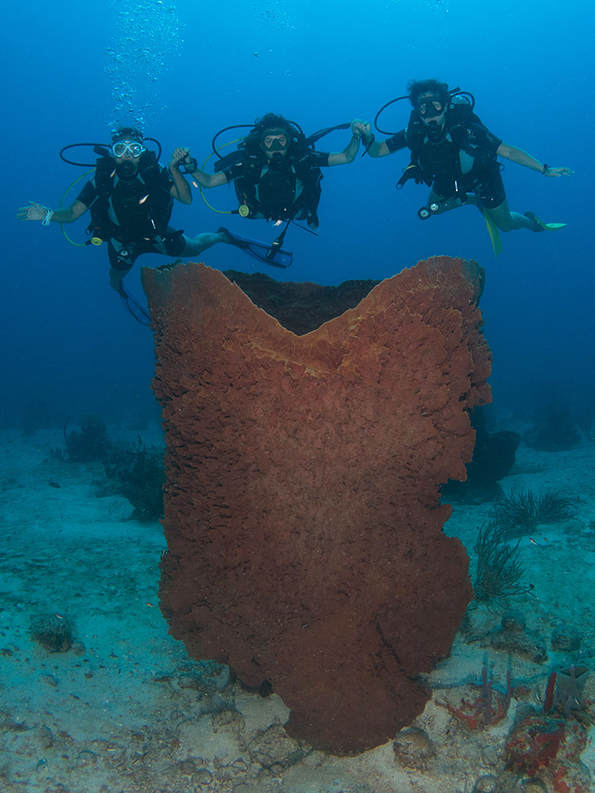
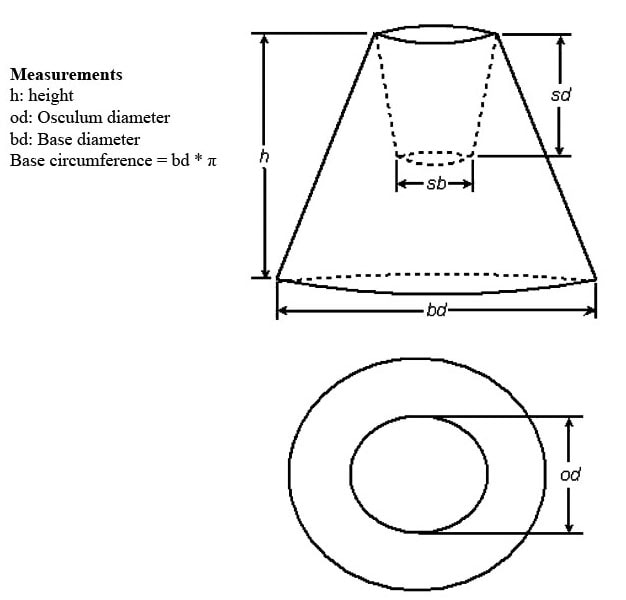
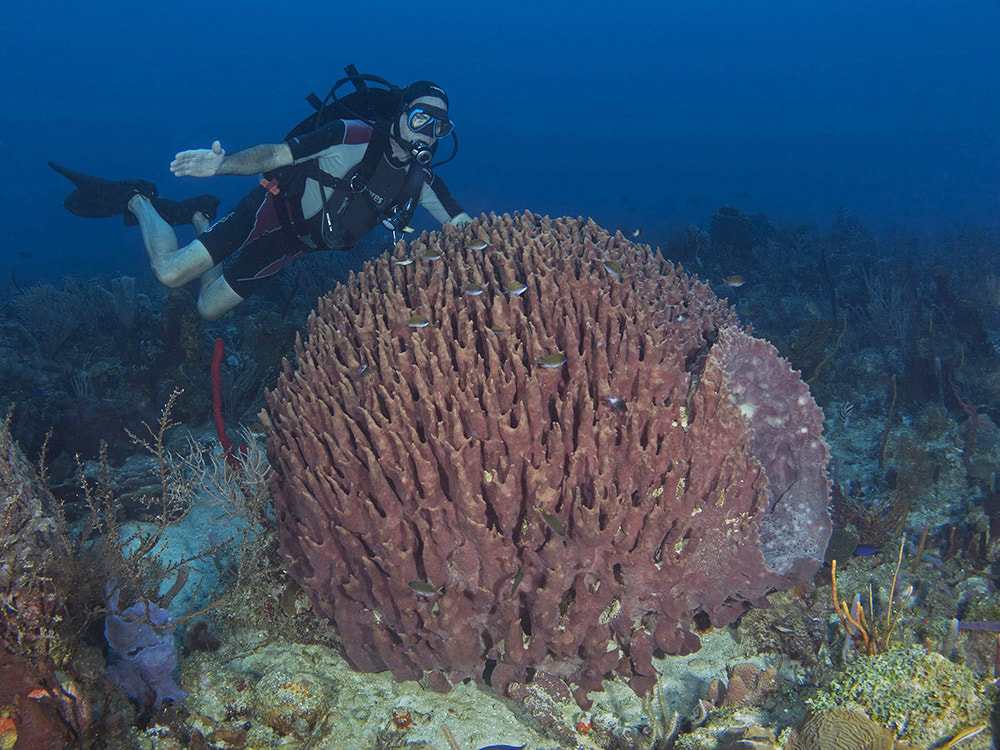
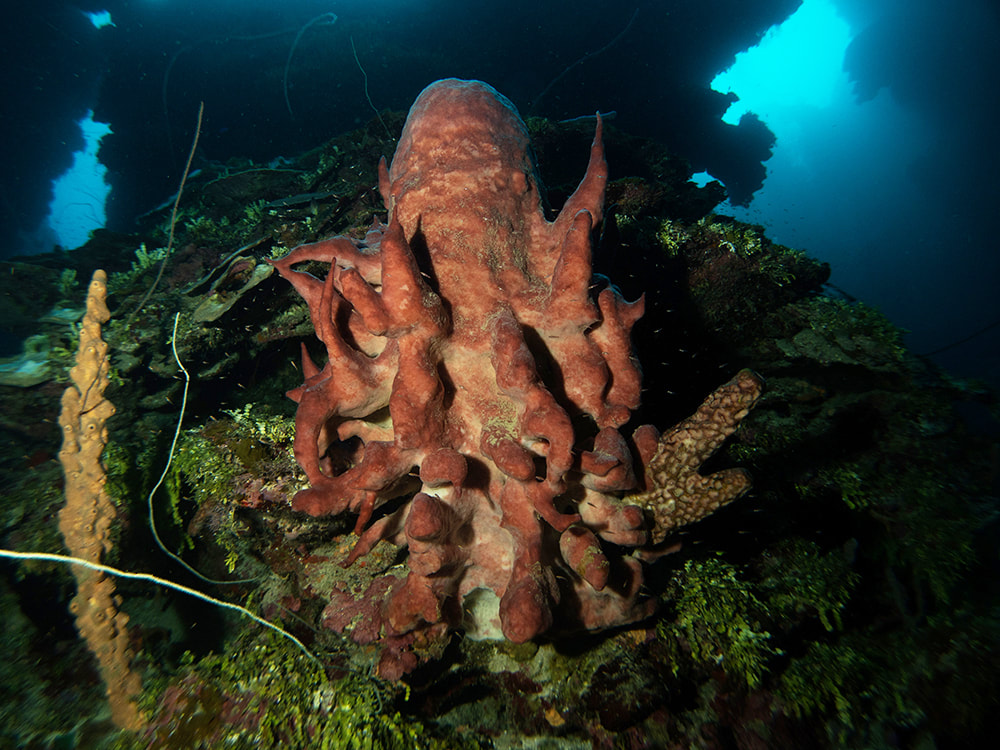
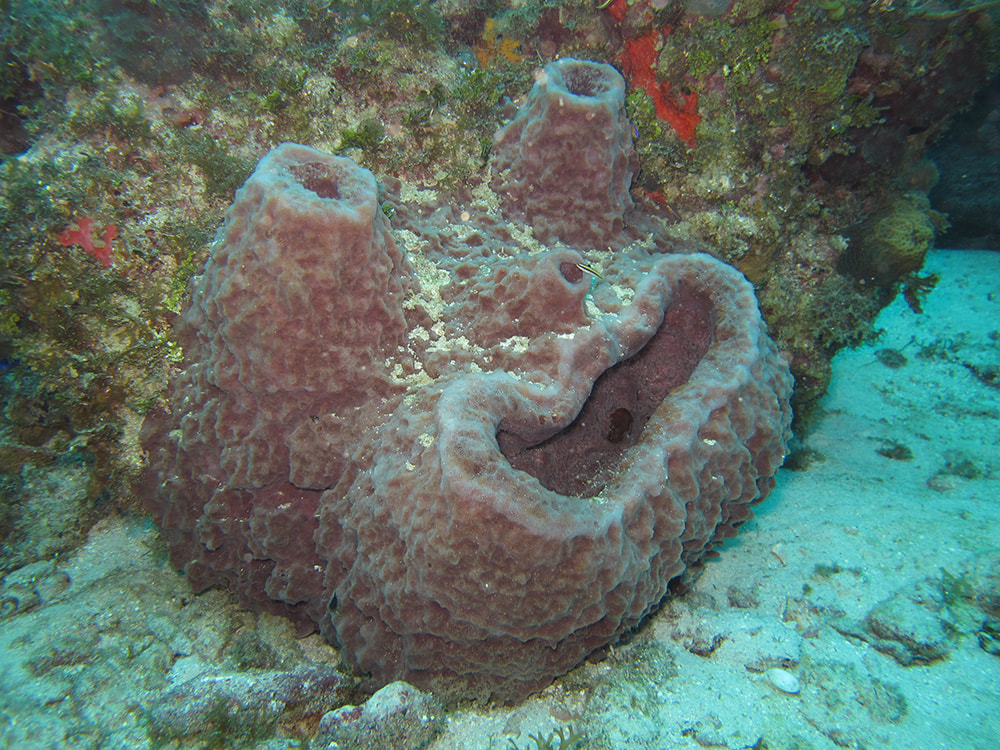
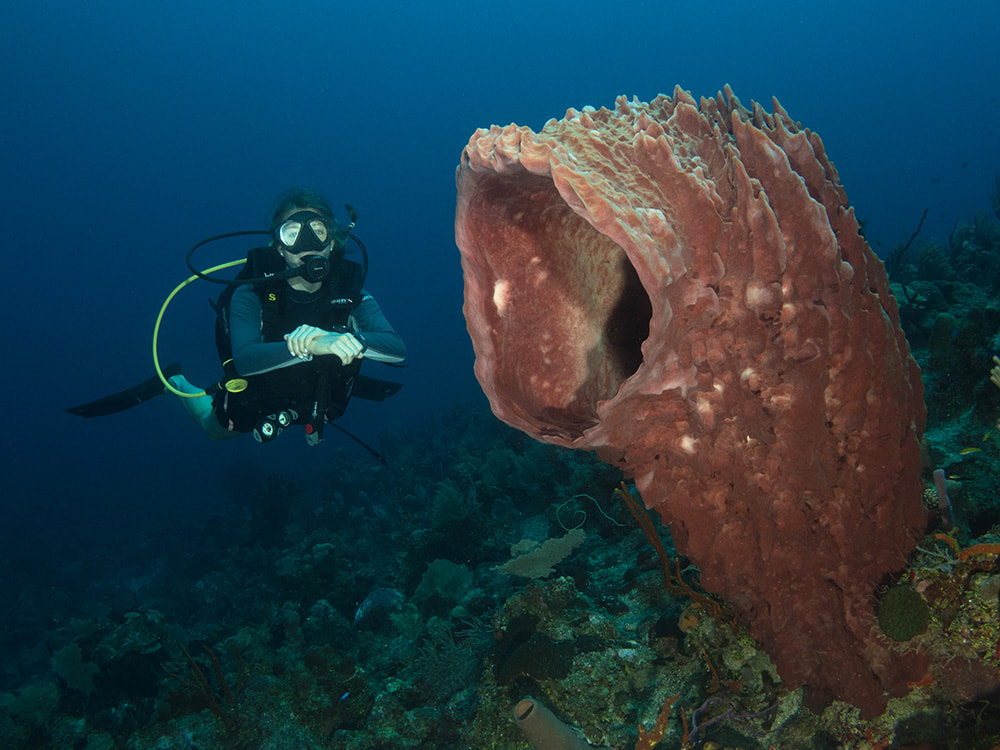
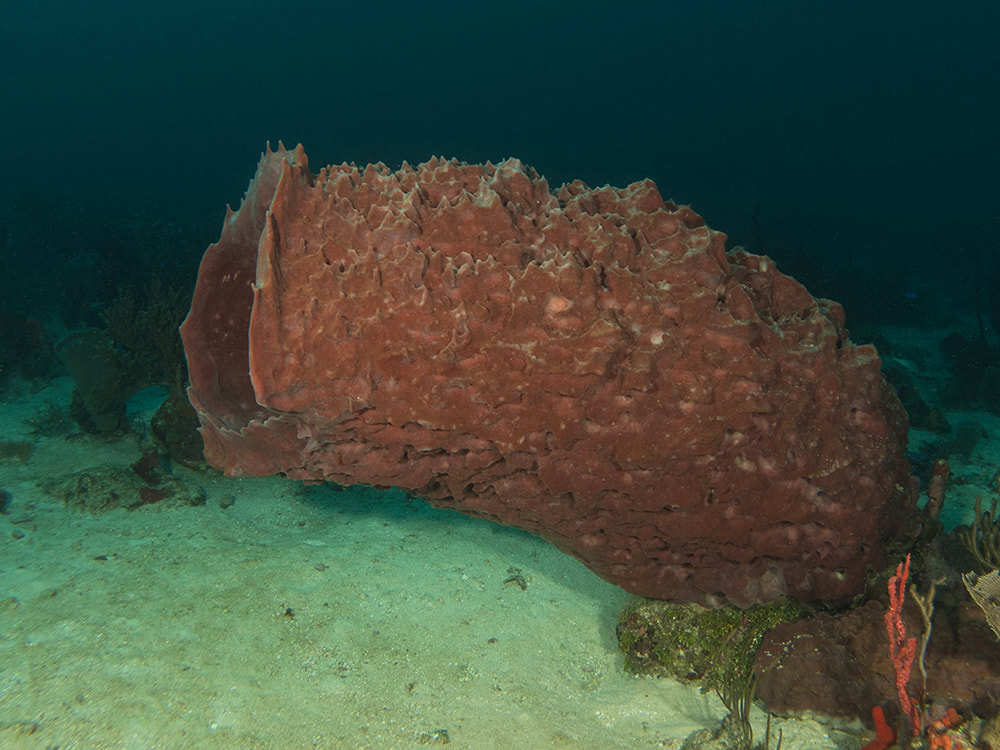
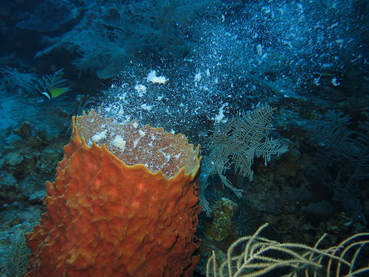
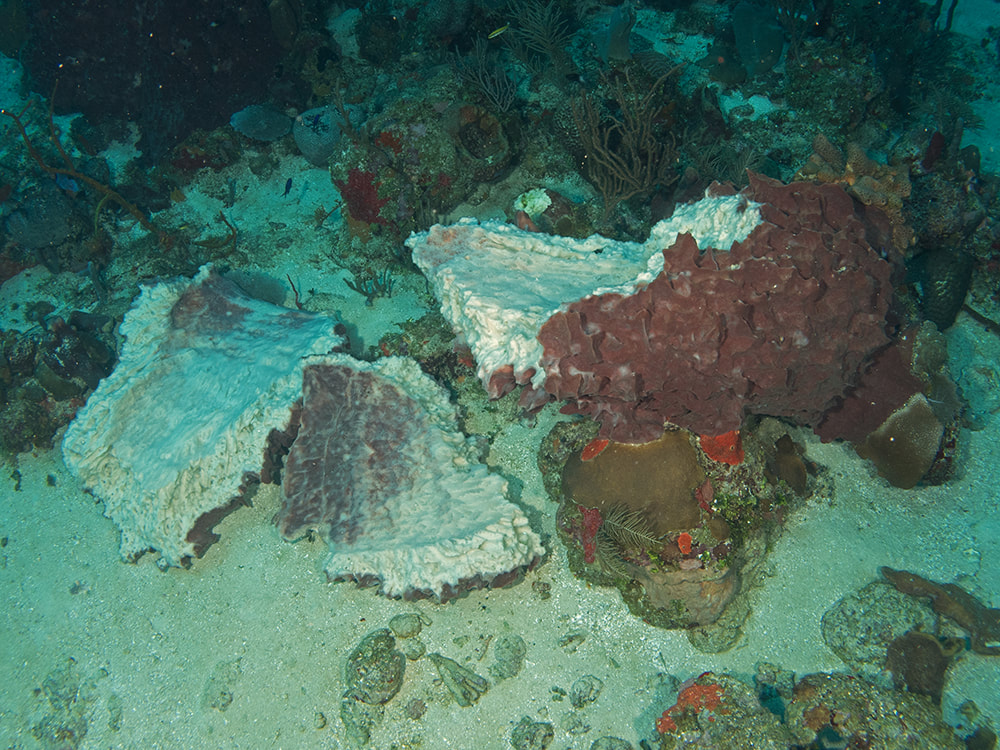
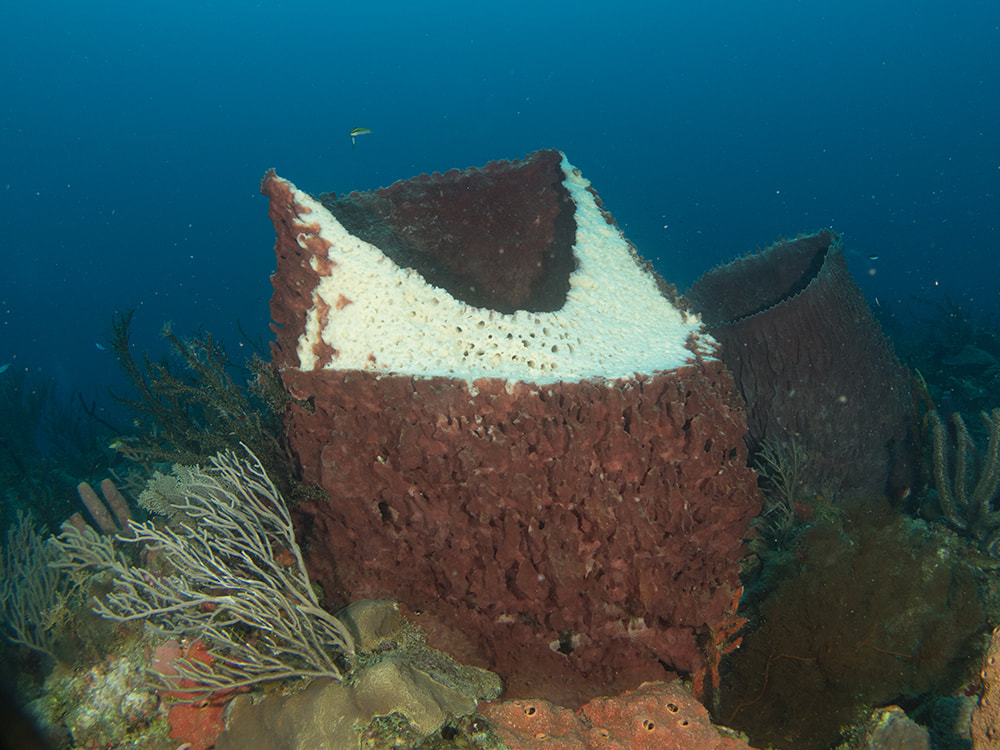
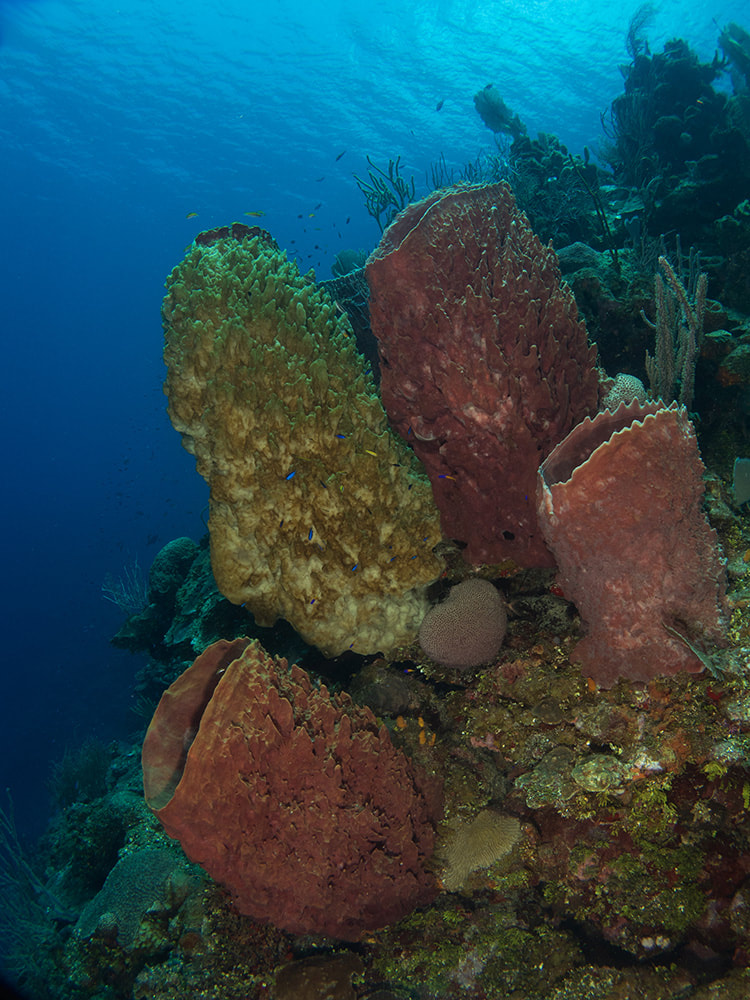
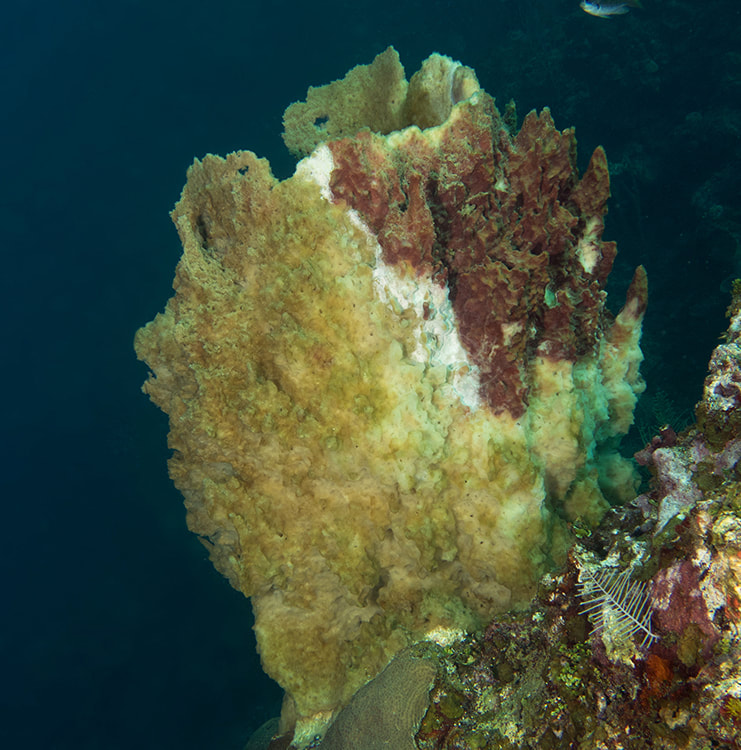
 RSS Feed
RSS Feed